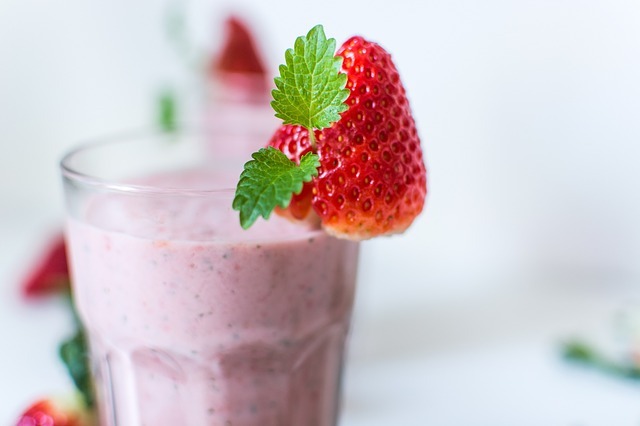8 Swallowing Tips for Survivors of Head and Neck Cancer
by Karen Sheffler, MS, CCC-SLP, BCS-S of SwallowStudy.com

Speech-Language Pathologists provide “life-altering” evaluations and treatments, according to The American Speech & Hearing Association (ASHA) in their promotion of May is Better Hearing & Speech Month (BHSM) back in 2016. ASHA raises awareness about the difficulties people of all ages have with hearing, communicating, and feeding/eating/swallowing. When I hear “life-altering,” I especially think about the diagnosis of head and neck cancer. I think of how speech-language pathologists constantly strive to do more for the people we serve, especially when it comes to their quality of life around communicating and enjoying a good meal!
ASHA’s theme that year was “Communication Takes Care.” I’m putting a spin on that to broaden its scope for clinicians practicing in the field of dysphagia: Speech-Language Pathologists take care of the whole person through good communication, support, and caring!
In this blog I want to direct this caring to people who have had the life-altering experience of difficulty swallowing (dysphagia) due to head and neck cancer and its treatments.
8 Swallowing Tips for Survivors of Head and Neck Cancer:
I hope this community will use the comments section below to continue to share heartfelt advice and experiences.
1. Support Groups. Reach out for and accept help from others. Support from family and friends can guide you down this long road. Even if you are just starting on this journey, visualize yourself now as a survivor, not a patient.
Hearing other survivors describe what got them through treatments can be helpful. For example, here are tips from Michael Douglas on how to survive and thrive (Read more in this HPV blog):
-
- Realize that you are in for “7 cycles of hell” with radiation and chemotherapy.
- Expect to feel awful. Douglas recalled how he sank lower each week.
- Prepare for battle like a soldier.
- Maintain a sense of control. You are part of the team.
- Work with the team. “Their job is to treat you and your job is to toughen up,” per Douglas.
- “Cancer cannot be fought as a series of individual battles, but as a well-planned war, in which all of us…are allies.”
2. Make sure a Speech-Language Pathologist (SLP) is on your team. Instrumental evaluations of swallowing (via a video x-ray or endoscopy) performed by an SLP who specializes in swallowing can show you what works and what does not work regarding your swallowing structure and function. The instrumental evaluation can also show you what is safe to eat and drink, how to make eating and drinking safer with postures and strategies, and how to swallow your medications. It will help you and your SLP create the best swallowing treatment plan for you.
3. Prepare for a Preventative Swallowing Exercise Program. Michael Douglas related cancer treatment to a well-planned war, and the SLP will help you prepare with swallowing exercises at “boot-camp” early on. The term “boot-camp” was coined by MD Anderson Cancer Center at the University of Texas (see this blog at National Foundation of Swallowing Disorders to read more). Researchers at MD Anderson who specialize in head and neck cancer stress the importance of eating plus exercise to help people with dysphagia return to a more normal diet.
The term, “boot-camp” is very appropriate, as a boot-camp happens before deployment, right? This can remind the team that these swallowing exercises need to be started prior to or at the beginning of radiation. If started early, rigorous exercises done 2 times a day can prevent some of the toxic effects of radiation and chemotherapy. It is important to keep your mouth, tongue, jaw, throat and neck muscles active, with good range of motion and strength. Full body exercise, like walking, can also help prevent pneumonia!

4. Keep Swallowing. Food and liquids are your weights for weight training exercises. Your SLP will help determine the level of thickness to use with your liquids to swallow safely. Liquids range in thickness from a thin liquid like water, to mildly thick/nectar thick, moderately thick/honey thick, and finally to extremely thick/pudding thick. In general, for swallowing exercise, it is good to swallow a liquid or food thicker than water, to give your pushing and squeezing muscles a work out. For example, swallowing a thick smoothie with an effortful swallow can be good exercise. You can feel how you push with your tongue and squeeze with your throat.

To make your food easier to swallow:
- Add sauce, butter, cream, gravies to make food moist and cohesive in the mouth. The food needs to be slippery. Even pureed foods need to be moist. Imagine how cold-dry mashed potatoes become like wall-paper paste in your throat.
- Cook foods well so that they are very soft and easy to chew.
- Use a blender or food processor, not just for your smoothies, but also for tasty soups and stews.
- Try “cool,” soft or smooth foods such as ice cream, bananas, applesauce, cottage cheese, yogurt, custard, puddings, canned fruit, egg salad, tuna fish salad, etc.
- Dip you foods in your drink (i.e., dip your toast in tea).
- Alternate a bite of food with a sip of liquid, but try not to wash partially-chewed food out of your mouth with the liquid. This increases your risk of choking. Add moisture and chew well until the food is swallow-ready. Then, if you feel food stuck in your throat, use a sip of liquid.
- If food is stuck on that “shelf” in your throat (space at the base of your tongue above your airway created by the epiglottis, if your anatomy has not been altered), I have seen people get good at bringing that food back up to the mouth for a re-chew and re-swallow. Alternatively, you may need to practice hawking it up, as we say “better out than in” and down the wrong way.
5. Good Nutrition. Your dietitian can help you determine the amount of calories and protein that you will need. Adequate nutrition is essential to improve healing, resist infection, and maintain energy through your treatments for head and neck cancer. Your medical team may have already told you to really ramp up the protein.
Click here for a pdf on ideas of how to make your own High Calorie Nutritious Smoothies.

Your dietitian and you SLP can help you find great recipes for foods that are moist, easy to chew and easy to swallow. Here is a cookbook that I love for its tips and recipes: “Easy-To-Swallow Easy-To-Chew Cookbook: Over 150 Tasty and Nutritious Recipes for People Who Have Difficulty Swallowing,” by Weihofen, Robbins, and Sullivan. (Amazon link)
The National Foundation for Swallowing Disorders also has other recommendations here.
Read more about Why Puree? (i.e., Dysphagia diet of IDDSI Puree, Level 4))
6. Managing pain can help keep you swallowing. If your mouth pain is at 10 out of 10 on the pain scale, then it will be impossible to keep eating and swallowing. Check with your doctor about medications and strategies that are best for you.
Your pain may be due in part to Mucositis (see this link about mucositis on the OralCancerFoundation.org website). It is hard to clean the mouth when in so much pain. However, it can become a vicious cycle, as poor oral health can be a causal factor in developing mucositis. Mucositis may also be due to a low WBC (white blood cell) count and the necrotic and inflammatory effects of radiation. It can occur independent of fungal infections, like candidiasis (thrush), but thrush may exacerbate the mucositis.
Saltwater and baking soda mouth rinses can be used to clean and prevent mucositis. Think alkaline! More acidic foods and more acidic saliva may lead to more pain. You may need to avoid tomatoes, citrus, vinegar, and spicy foods, in addition to avoiding alcohol. Some people have needed to avoid dairy products when they had mucositis.
Here are some solutions to discuss with your medical team to prevent mucositis and thrush:
- 1 teaspoon of baking soda dissolved in 8 ounces of water.
- ½ tsp of salt, 2 tablespoons of baking soda dissolved in 4 cups of water.
- Sea minerals: Dr Wellington Espirito Santo Cavalcanti, DMD, oral surgeon, (personal communication, August, 2014) shared promising research that they are performing at the State Institute of Hematology-Arthur Siqueira Cavalcanti of Rio de Janeiro. They gave 25 study patients with Leukemia (Acute Mieloide Leukemia – AML and Acute Lymphoid Leukemia – ALL) tablets of a concentration of sea minerals of organic origin (one 500mg tablet, 2 times a day), keeping the pH of the saliva at 7.0-7.5. The 25 patients in the study had no complications, and only 6 had a “light mucositis,” which was “easily controlled.” Even 3 of the neutropenic patients were free from infection. Whereas, 30 controls with Leukemia did not take the food supplement, and their saliva was more acidic at 6.0-6.5, causing increased mucositis. He concluded that the sea minerals kept the pH alkaline and the oral microbiota unchanged, which prevented the growth of opportunist microorganisms.
Your doctor may prescribe a mouthwash for treating mucositis and/or thrush:
“Magic Mouthwash” compound solutions – created by MD and pharmacist with a prescription. You can use a q-tip to spot-treat the sores. Per the Mayo Clinic, a “Magic Mouthwash” compound MAY contain:
- Antibiotic if bacterial infection around sores
- Antihistamine to reduce discomfort (Benadryl)
- Topical anesthetic to reduce pain (Lidocaine)
- Anti-fungal if fungal growth/thrush is suspected (Nystatin)
- Corticosteroid to treat inflammation
- Antacid to enhance the mouth coating of the other ingredients (Maalox)
Cautions:
- Your doctor and pharmacist will create the formula right for you.
- The pharmacist will give directions on how to swish it in the mouth (i.e., for 1-2 minutes and swallow or spit out the solution).
- For maximum effect of the solution, do not eat or drink right after taking it. Take extra caution with eating if there is a numbing agent in the solution. Spot-treat the sores before you eat to avoid whole mouth numbing.
- If you swallow it, keep in mind there will be more side effects of the medications (i.e., Benadryl causes drowsiness).
- Avoid white petrolatum-based lip balms. They can promote the infection. They do not penetrate, heal or moisturize the tissues.
7. Manage Dry Mouth, also known as Xerostomia. As your radiation treatments progress, your mouth will get drier due to less salivary flow. (The radiation hits your salivary glands too as it targets your cancer site. Your radiation oncologist has tried to avoid as many of your salivary glands as possible with the beam of radiation).
As you produce less saliva, your saliva gets thicker, stickier and harder to clear. You may feel you are choking at night on this thick saliva. Make sure you are well hydrated. Consult with your doctor if you think you may be dehydrated. Rinsing with club soda may help break this up. Club soda has sodium salts, potassium salts and sodium bicarbonate (baking soda), which mimic naturally occurring alkaline mineral waters. (Note: usually the carbonation process makes seltzers and sodas acidic, so choose club soda instead).
Keep a humidifier in your bedroom and/or use a personal steam inhaler.
Sip on water throughout the day. Suck on sugarless hard candy. Lemon added to water or a lemon candy can help stimulate saliva if the lemon does not cause pain.
Artificial Saliva Substitutes:
- The “Easy-to-Swallow Easy-to-Chew Cookbook” noted above suggests a homemade mouth lubricant with: 1/4 teaspoon of glycerin added to 1 cup of water.
- OraCoat XyliMelts for dry mouth are discs that adhere to your mucosa for longer lasting moisture day or night.
- Biotène makes a Dry Mouth Oral Rinse, toothpaste, gum and mouth moisturizer sprays and gels. Minty flavor.
- Lubricity makes a dry mouth spray that comes in a bottle that fits in the pocket/purse. It does not have a flavor. Its viscosity/thickness is a Slightly Thick, Level 1 on the IDDSI.org Dysphagia Diet framework.
8. Maintain Good Oral Hygiene. Good oral care can prevent aspiration pneumonia and oral pain from mucositis. (Read more on this topic with this blog.)
Use a soft-bristled electric toothbrush. Use mouthwash after brushing to remove the debris and bacteria released with brushing. Ideally, clean your mouth in the morning before breakfast, after every meal and before bed. If you have dentures, take them out at night and don’t forget to remove and clean them after meals. Dry mouth can make food really stick to your teeth and dentures.
Visit your dentist before and during your treatments. The dry mouth (xerostomia) can put you at a greater risk for tooth decay.
To read more about How to Perform Effective Oral Care, please check out this blog.
Here is a pdf of step-by-step instructions on Oral Care Procedures for Aspiration Pneumonia Prevention.
Final Oral Hygiene Tips:
- Avoid SLS (Sodium Lauryl Sulfate) in toothpaste. Look for label to say SLS-Free Toothpaste (i.e., Biotène).
- Avoid Alcohol-based mouthwashes to avoid drying out the mucosa and causing local irritation.
- If Platelet count is <40,000, avoid flossing or vigorous brushing of the teeth due to risk for bleeding. Consult with your doctor and dentist.
~~~
Thank you for reading. In all my years of working in rehabilitation and at hospitals, I have seen how the support by the team (including friends and family) and the person’s attitude facilitate the best recovery from head and neck cancer.
Please share your ideas.


I love these tips, Karen! Thank you! I think I would add to be aware about increased chances of trismus with oral cancer (let your MD or SLP know right away when you detect any reduction in mouth opening ability) and the importance of performing frequent oral cavity checks for suspicious sores to the list, too.
Yes, and that reminded me of information I have in the HPV blog (linked above) regarding oral checks and suspicious sores from MouthandThroatCancer.org (see below).
New sores in the mouth during radiation and chemotherapy are likely mucositis and/or thrush, and need to be addressed by your doctor right away. The person should inspect his/her mouth in the mirror (sticking tongue out as far as possible and to each side, as well as checking palate, gums, inside lips and cheeks). SLPs should examine and document any changes seen also.
In general, Symptoms to tell your doctor about (per “A Voice for Hope” at http://www.mouthandthroatcancer.org):
1. Sores in the mouth that do not heal (i.e., if you are NOT a person already receiving radiation/chemotherapy for Head and Neck Cancer, then tell your doctor if you have a sore that has not healed in 1-2 weeks.)
2. Red or white patches in the mouth
3. Bleeding-non-healing ulcers
4. Lump or swelling in the neck or under the chin
5. Difficulty swallowing, pain with swallowing
6. Ongoing earache (pain radiating to ear)
7. Hoarseness that lasts for more than 2-3 weeks
I like your advice to make sure you are involved in some kind of head and neck exercise program. Rehabilitation makes a huge difference when you are trying to stay healthy. Do you have any other tips about finding a good doctor to help me with my recovery? And, do you have any tips for finding a doctor to help you with surgery?
Thanks
As with any doctor, make sure you feel like you can be an active part of the team. The doctor is your coach and advocate, but she/he should have open communication style to keep your needs and goals in mind. The doctor should respect how you learn and not talk over your head (ie., using visuals or models to help explain the technical stuff).
Just a few thoughts.
There are many ways online to research a doctor’s qualifications and approval ratings.
Wishing you the best.
Karen
Just found this info. I live in the UK and had retromolar trig one cancer. Lower jaw bone removed and replaced with a bone from my leg. To to it all 5 Months prior to that I had temporomanibular joint replacement on the opposite side.
Eating is hard due to lack of chewing ability a dmouth opening down to 2cm. Numbness and lack of swallowing ability one side of my throat. however, the info is good and I try anything new that will help. Unfortunately due to eating problems I now have diverticulitis so some of the fruit I enjoyed eating I now can’t. Keep up the good work.
If you are searching the Best Neck Cancer Treatment in Delhi then you may contact with Dr. Mudit Aggarwal to take an appointment for the treatment and know the causes of the diseases. For more details visit: – headneckdoctor.com
Awesome and informative post
Thank you! Can you share how you used the info and how it may have benefited your patients that you see?
Thanks for sharing Your tips with all They are real helpfull to care oneself
Your all information is always very helpful and great. your blog good for them who are suffering from cancers .